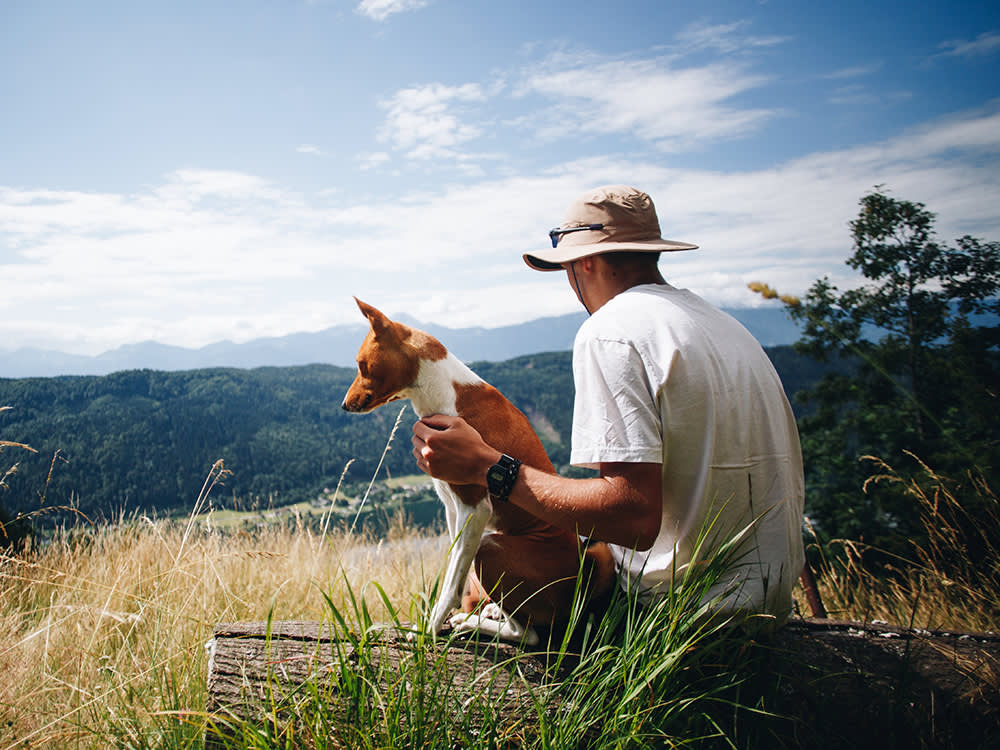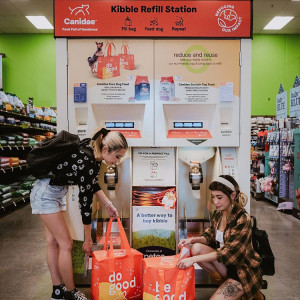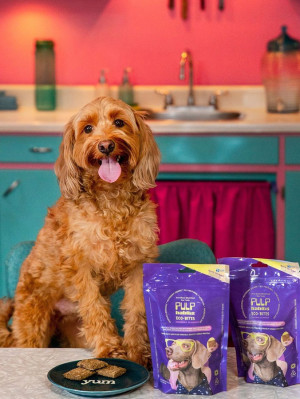8 Ways to Be a More Eco-Friendly Pet Parent in 2025
Expert tips to help reduce your pet’s carbon footprint. (Pawprint? You get it.)
Protecting the planet is always important, and as a new year rolls in, it’s a great time to stop and take stock of how we can do our part. As pet parents, we have to consider our own carbon footprint and those of our pets. Luckily, there are some easy ways to reduce waste and make sustainable choices. Here’s everything you need to know to make 2025 your most eco-friendly year yet.
How pet care affects the environment
The tough reality is that animals and humans alike use up a lot of the earth’s resources in our day-to-day lives. A 2017 studyopens in new tab estimated that pet food consumption contributes 64 million tons of greenhouse gas emissions each year. That figure is likely much higher now as the number of pet parents has skyrocketed in the past few years. The same study estimated that pet waste was equivalent to the annual trash of 6.6 million humans.
It’s not just the grub our pets eat, either. Researchers also take into account the use of land, water, pesticides, and fossil fuels in the pet food-making process. Then there’s the packaging of food and treats, and the materials that go into making everything from poop bags and plastic toys to dog beds and cat trees — all of which add a lot to a household’s total carbon footprint.
There is no simple solution, but thankfully, change is coming. For starters, “The pet food industry has started to confront the issue of the sustainability of feeding pets through advances in product design, manufacturing, education, and policy in order to reduce overfeeding and waste, encourage recycling, and find alternative sources of protein,” said Gregory Okin, professor at UCLA’s Institute of the Environment and Sustainability, and the author of the aforementioned study. There are also advancements in materials and production methods used to make toys, furniture, litter, and more essential pet products. Read more about them below.
How much do you spend on your pet per year?
Tips to reduce carbon pawprints
1. Buy in bulk.
Purchasing your pet food in bulk — even better, locally — can help reduce superfluous packaging supplies and shipping/delivery costs. It’s better for your wallet, and it’s better for the environment.
2. Consider opting for novel (or plant-based) proteins.
There is an increasing number of meat alternatives and sustainable pet foods, which can help diversify your pet’s diet without sacrificing the nutritional value they need. Check with your vet before changing your pet’s diet dramatically.
3. Count calories.
Spoiling your pet with an extra scoop of food or doling out treats with abandon may feel like love, but overfeeding harms both them and the environment. “It is not just what we feed pets, but how we feed them that contributes to the environmental impacts of our pets, and obesity is a major problem among domestic animals,” Okin noted in his study. “Simple measures like feeding domestic dogs and cats nutritionally appropriate amounts will certainly reduce their environmental and energetic impact.”
According to the Association for Pet Obesity Prevention, a whopping 60 percent of cats are overweight or obese, and those extra pounds are associated with outsize issues including osteoarthritis, heart disease, and diabetes. Veterinarian Dr. Shea Cox knows that pleading puppy-dog eyes are hard to ignore, but she says, “overfeeding your dog can lead to obesity, which is linked to a host of serious health issues including type 2 diabetes, heart disease, arthritis, joint problems, even cancer. As a result, dogs who are overweight or obese tend to have shorter lives than those who maintain a normal weight.”
4. Buy eco-friendly pet toys and furniture.
The petcare industry has taken note of consumers’ desire for greener products, and more and more sustainable pet toy and accessory brands for dogs and cats are surfacing every day. Some locally produce products in limited-runs to prevent waste. Others use recycled or upcycled materials, like P.L.A.Y., whose dog bed filler is made from 100 percent post-consumer, certified-safe recycled plastic bottles, and Honest Pet Productsopens in new tab, whose cat toys are made from sustainable hemp and organic catnip.
Pure Earth Petsopens in new tab uses biodegradable packaging for their subscription boxes as well as eco-friendly toys from recycled materials. In general, though, subscription services that encourage monthly consumption and accumulation of materials aren’t super sustainable.
5. Not all cat litters are created equal.
Choosing a more sustainably sourced litter can help reduce your pet’s total footprint. Clay-based cat litters are the most common (and most affordable and widely available), but are not considered good for the environment.
Corn-based cat litters are made from finely-ground whole corn kernels which are more environmentally friendly because a waste product is being given a new purpose, plus they biodegrade. Other sustainable cat litters on the market are made from kiln-dried shavings, reclaimed from lumber production so no new trees are chopped down, and 100 percent post-consumer paper from recycling centers.
6. Adopt, don’t shop.
In the very act of bringing home a new pet, you have the option to make a sustainable choice. Adopting a pet over buying one from a breeder is a more eco-friendly means of introducing a pet into your life. When you adopt from a shelter or rescue rather than buy from a breeder, it helps combat overpopulation which has an adverse impact on the environment (more animals means more meat production and more waste). So, look to your local shelter or rescue organization for a new pet. You’ll also be supporting your local community, which is always a boon for sustainability. And as a bonus, it’ll probably be easier on your wallet.
“All of this business around making the pet industry more sustainable is just window dressing if we keep breeding more and more dogs and cats,” says Paul Greenberg, James Beard Award-winning environmental writer and author of The Climate Diet: 50 Simple Ways to Trim Your Carbon Footprintopens in new tab. “We certainly shouldn’t encourage breeders to breed more elite dogs.”
7. Cut down on grooming products.
Splurging on every new designer grooming product may feel like peak pampering for your pets, but the amount of toxic waste that goes into the manufacturing and disposal of grooming products is pretty extraordinary. Don’t get us wrong — you need to wash your dog (and sometimes bathe your cat). But does your pet really need conditioner and perfume? We think not.
8. Try composting pet poop.
Consider offsetting your pet’s waste by composting. It’s important to do your research as we recently discovered that many poop bags billed as biodegradable or compostable are actually not; they’re generally derived from bioplastics, which take just as long to decompose.
To add insult to injury, most compost facilities will not accept pet waste because it can contain harmful bacteria and parasites. “While it’s technically possible to compost dog feces, it would have to be done separately, and for a longer time to kill the pathogens, only to be used afterward in non-food-producing gardens,” says Monique Figueiredo, founder of CompostableLAopens in new tab. “Cat litter and feces, in particular, should never be composted because they may contain Toxoplasma gondii, a parasite that can infect humans and animals, which isn’t always killed during the process.”
The solution? Stick to recycled poop bags. Sadly, they will still end up in a landfill, but at least they are derived from 90 percent post-consumer recycled plastic. Or, DIY a composter in your own backyard; just be sure to keep the setup safe from neighborhood pests.









